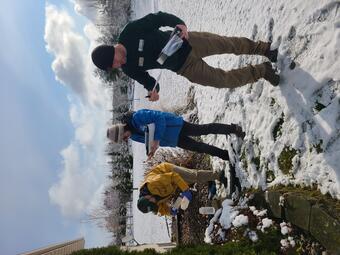New publication on study on antibiotic resistance in well water
Congratulations to Laboratory for Infectious Disease and the Environment (LIDE) Biologist Joel Stokdyk who is a coauthor on a recent paper about antibiotic resistance in well water.
Antibiotic resistance is a global public health challenge with well-known environmental dimensions, but quantitative analyses of the roles played by various natural environments in transmission of antibiotic resistance are lacking, particularly for drinking water.
A new paper was recently published, Quantitative microbial risk assessment for ingestion of antibiotic resistance genes from private wells contaminated by human and livestock fecal sources.
This study assesses risk of ingestion for several antibiotic resistance genes (ARGs) and the class 1 integron gene (intI1) in drinking water from private wells in a rural area of northeast Wisconsin, United States. Results allow comparison of drinking water as an exposure route for antibiotic resistance relative to other routes like food and recreational water. They also enable a comparison of the importance of human versus livestock fecal sources in the study area. Our study demonstrates the previously unrecognized importance of untreated rural drinking water as an exposure route for antibiotic resistance and identifies bovine fecal material as an important exposure factor in the study setting.
This study is part of a research program about private well water quality in Northeast Wisconsin's vulnerable aquifer, and, more generally, vulnerable groundwater across Wisconsin. Related previous publications such as Microbial source tracking and land use associations for antibiotic resistance genes in private wells influenced by human and livestock fecal sources, and Sources and Risk Factors for Nitrate and Microbial Contamination of Private Household Wells in the Fractured Dolomite Aquifer of Northeastern Wisconsin study groundwater contamination, sources of contamination, factors for contamination, and (with the recent field work) forecasting when contamination is most likely.
These studies aren't done in isolation and are part of a broader effort to understand and improve well water quality for Northeast Wisconsin residents.



